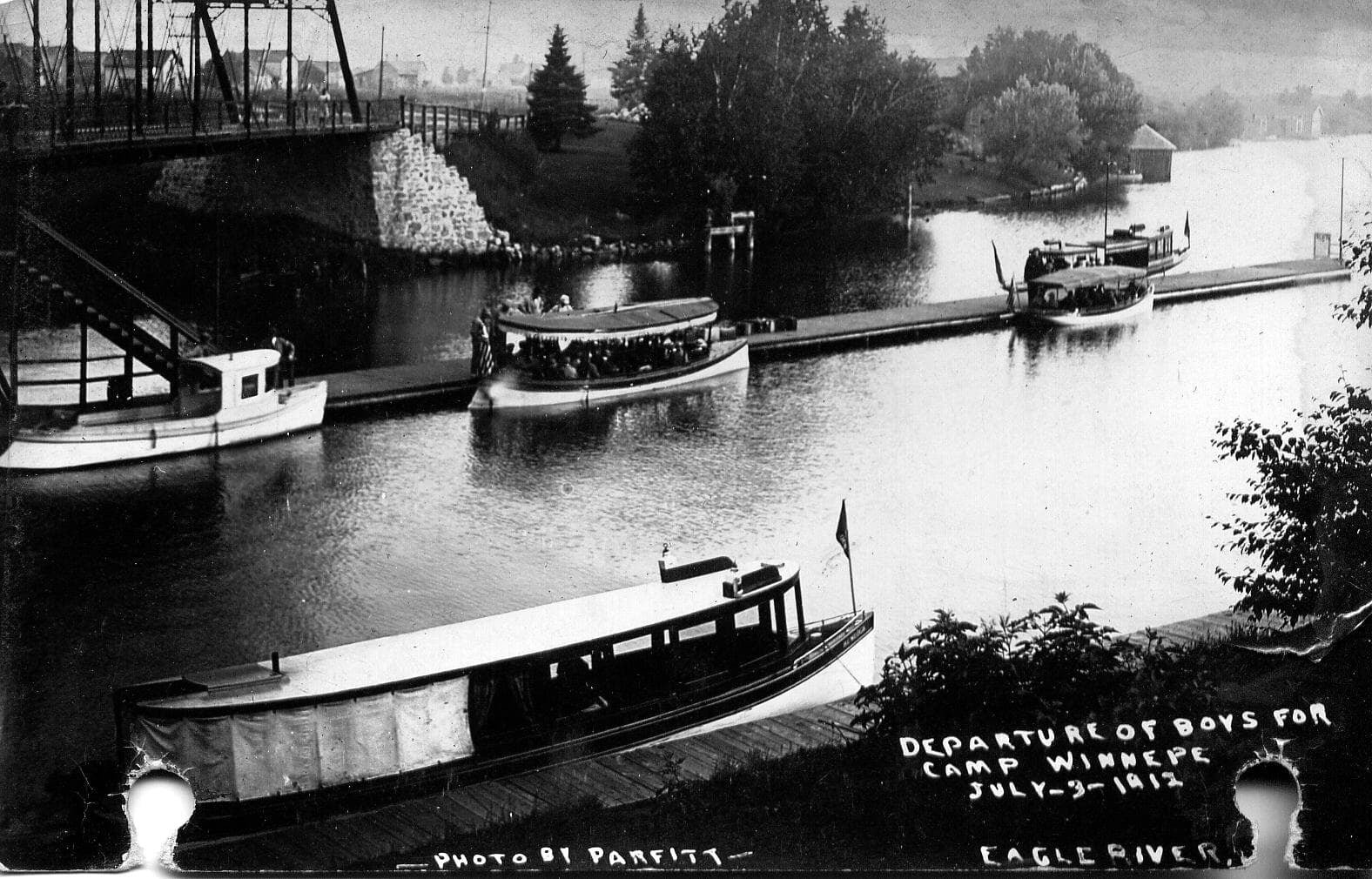BIRTH OF A COUNTY
Under Chapter 150, Laws of 1893, Vilas County was erected from territory formerly a part of Oneida, compromising all of that county on April 12th, 1893. The county was named after William F. Vilas and upon it's conception housed two major towns, Minocqua in the West and Eagle River, in the East.
Eagle River, declared a town in 1885, was crowned in the county seat in 1893 and served as the sole legislative body and governing entity. Overseeing 15 different townships across the county. Eventually becoming a city in 1937.

A BRIEF & EARLY HISTORY OF EAGLE RIVER, WISC.
With settlements starting on the South Bank of the Eagle River, which earned its name given the amount of eagles present in the surrounding forests. The river is a flowage from a larger chain of 28 lakes, taking approx. 50 miles to travel, with the two ends however being only approx. 16 miles apart. Some of the earliest settlers arrived some 30 to 20 years before the Milwaukee Lakeshore and Western (M.L.S.W.) Railway was introduced in 1883.
These first explorers who arrived ranged from Timber Cruisers by the name of Fox & Helms in 1853 near what is now Eagle Waters Resort, but also that of James Hall and his family who arrived in 1863 on northern shores of Eagle Lake, farming aspirations by C.L. Perry in 1865 near Yellow Birch Lake, and at the same time Daniel Gagen who settled the point directly ahead of the T-Docks. As the M.L.S.W. started construction of the Railroad Bridge in June of 1883, new settlers had started to permanently terraform and encamp where the current town resides, the first and notable being John O'Connor and his son George in April of 1883. Soon following came other notable "original" families such as Walsh, Lawler, Croker, Drager, Carter, and McIntyre to name a few.
The first merchants to arrive in Eagle River were Dickinson & Cook to which as Lyman J. Cook recounts "... Dickinson and myself came to Eagle River the first part of May, 1883 ... On arriving here we found a crew getting out timbers for the railway bridge, there was a pole bridge for the teams across the river below where the railway now stands." That same year, a large tract of land was purchased from logger and speculator John Phelps by lumberman John O’Connor and, in 1885, while still a part of Oneida County, the plat of Eagle River was officially filed by O’Connor’s wife, Anna.

TIMBER BASKET OF THE NORTH
AN UP AND COMING COMMUNITY
In spite of the varied development of the town, Eagle River was progressing at what would be considered an "unusual rate". At least according to a representative of the Rhinelander Herald who visited Eagle River in June 1900 and reported that the community was “showing unusual evidences of prosperity”; The town had established Sewer Systems, Telephone Service, Electric Lighting, and a Public Works water plant all between 1891 and 1900.


THE PRISTINE LANDSCAPE






